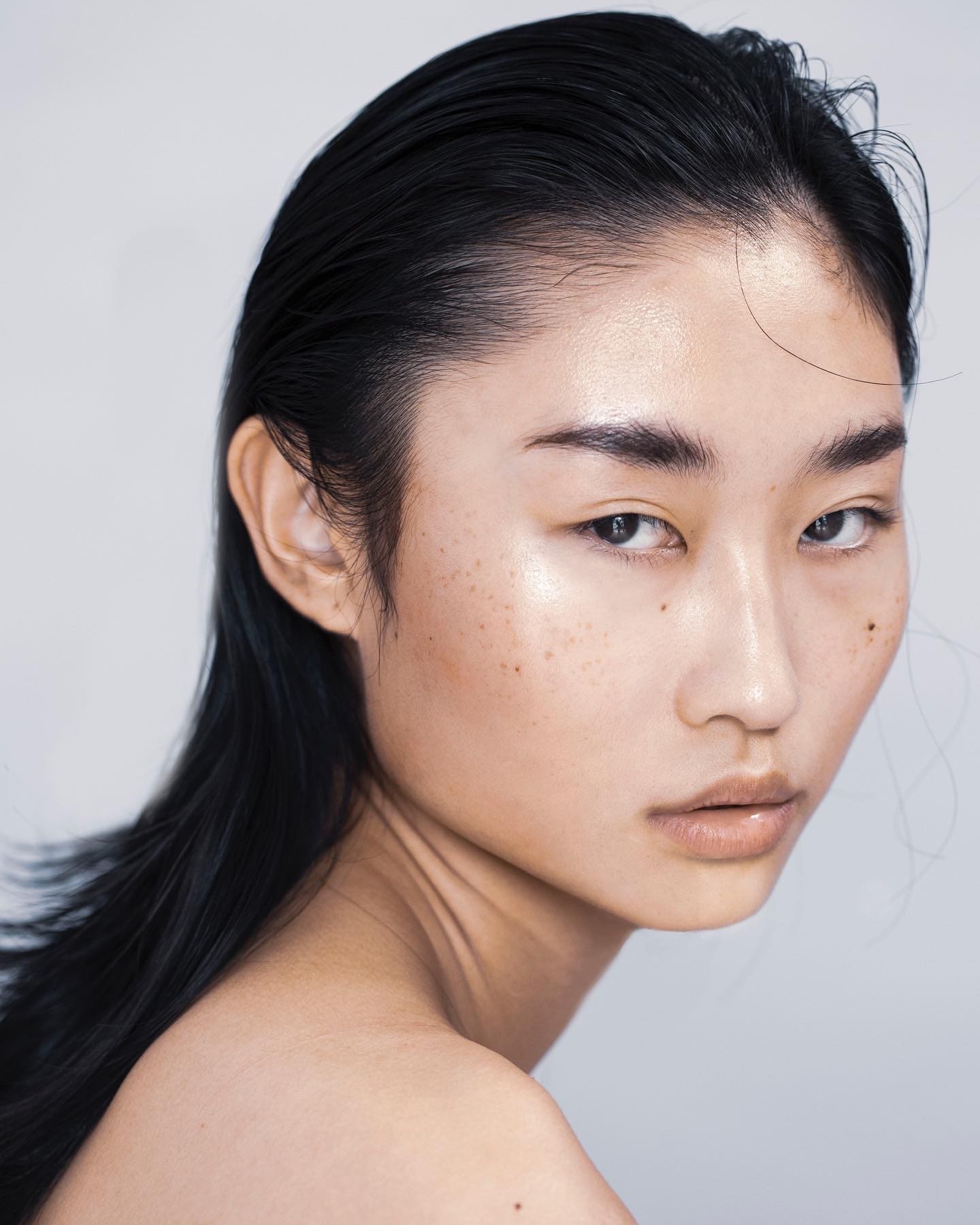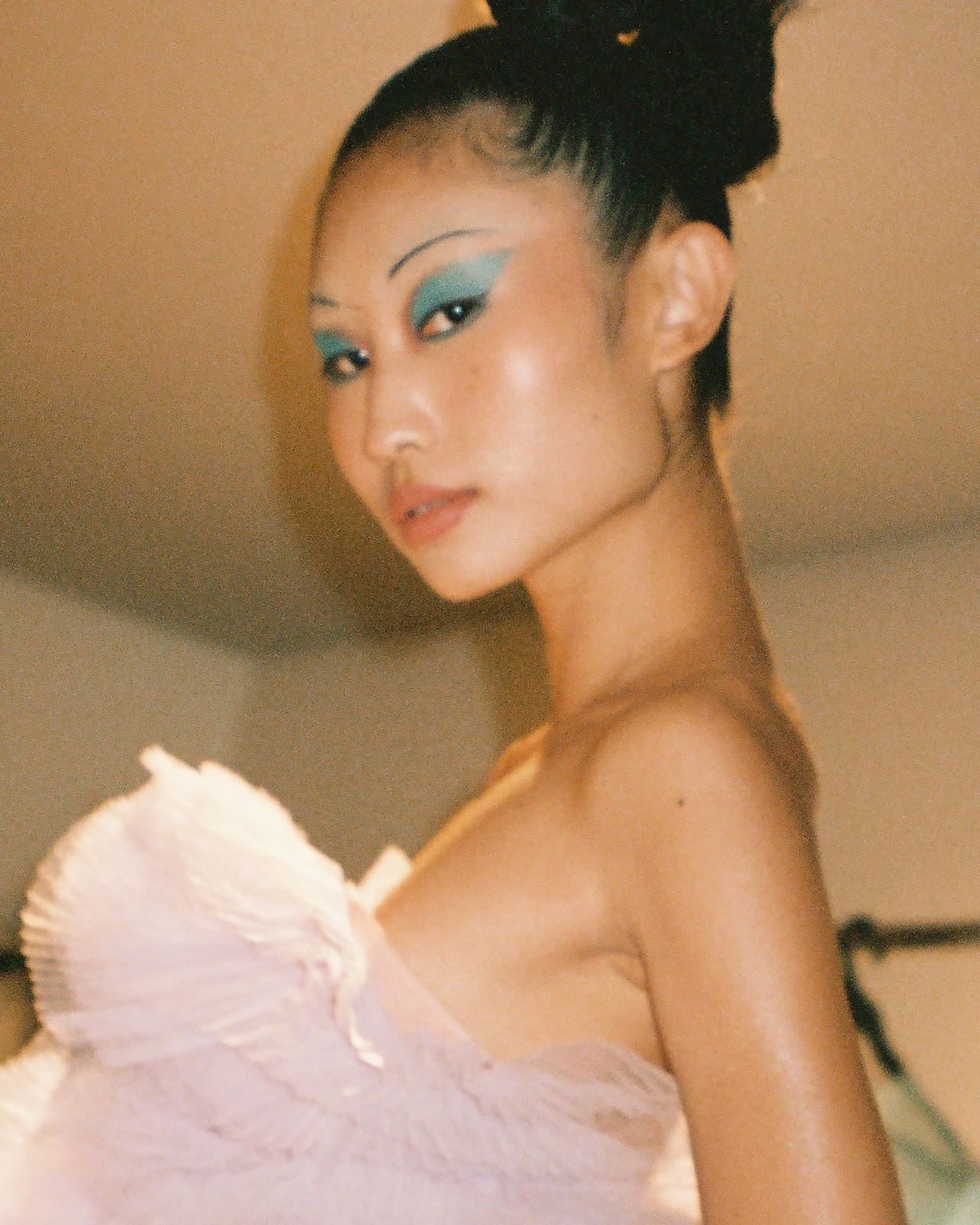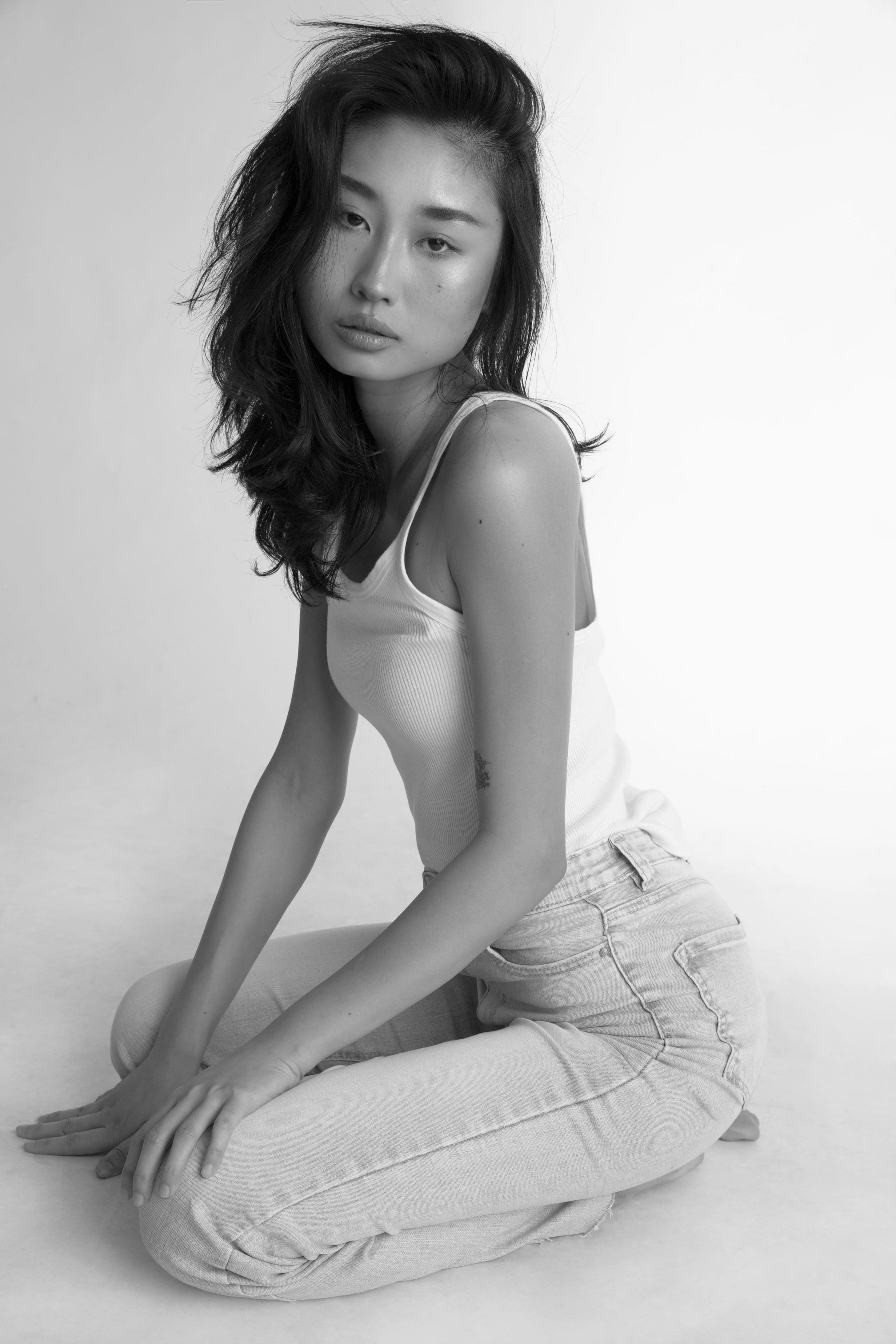FRANCIS LIBIRAN tiered pleated tulle dress. Koji Arboleda
Our latest cover girl shares her beauty journey.
Growing up, model Ica Dy was a big telenovela fan and acting hopeful. “I really wanted to enter Pinoy Big Brother, that was my main goal,” the 23-year-old Vogue Philippines’ October cover star tells me. She had just arrived home after a 13-hour shift at Wild Flour Italian, where she currently interns as part of her four-year culinary program at Enderun College. But when she’s not donning hairnets and whipping up prawn mafaldines (her favorite from the establishment), the striking Asian beauty, who strongly identifies as Filipino Chinese, works as a model on the come up, though she’s since let go of her reality show dreams. Aside from not being keen on lining up for hours to audition, she also felt like she wouldn’t be found beautiful—at least by the general public.
“When I was young, I would see more mestizas like Julia Barretto [and] Liza Soberano. There [wasn’t] much chinita [representation]. There was one chinita. Kim Chiu,” the Philippine-born model of Chinese heritage laments, before sharing her take on beauty standards in the country. “The problem is that society creates these standards. ’Cause as young as you are, you’re taught that [mestizas] are the only pretty ones,” she says. And Dy has approximately four centuries of valuing Eurocentric features and, conversely, inculcating the idea that melanin is less desirable, to blame—a result of the country’s succession of white colonizers.
Though to an outsider, Dy largely fits the bill of what’s considered “pretty” (she is a model and looks it), the notion that “lighter is beautiful” was deeply ingrained in Dy that she even felt compelled to incorporate whitening products in her daily regimen. “I used to swim a lot, so I [was] really tan. And I would use Kojic and papaya soap,” she shares, now incredulous at the memory. “I couldn’t believe I [was] using that. Being morena and having tan skin is really beautiful,” she says. But for a while, her brightening efforts served their purpose and earned her compliments. “When I got a bit less tan, I would [be told], “Ang puti mo (You’re so white). [Complexion] is associated with beauty which I do not agree [with].”

When the world shifted to admiring Asians thanks to the advent of Korean media, for Dy, even more unattainable beauty prerequisites piled on. “I [became] really insecure about my jawline. ‘Why don’t I have that Asian oval shape?’” Dy says, revealing how she would steer clear of certain updos to avoid drawing attention to her jaw. It wasn’t until she began modeling in her hometown of Baguio, after following in her older sister’s footsteps, that she learned to appreciate her features—including those she used to conceal. Seeing her sister break long-reinforced beauty boundaries, Dy realized modeling could be “satisfying.” She muses, “You see yourself [from] different perspectives.” And for someone who often felt out of place and underrepresented in media, that’s exactly what she needed.
Fittingly, Dy’s latest project,Vogue Philippines’ October cover, riffs on the concept of ginhawa and the journey towards relief—a familiar process as she reconciles her own conflicting feelings towards beauty. Still, she knows every shoot, every Instagram post, is a platform to help challenge unrealistic beauty ideals. Whether that’s by being unapologetically Asian and accentuating her eyes or showing skin texture online, she says, “I want young kids to look at me and see, “Oh I’m also unique and I can also be pretty in my own way.”
Below, Ica Dy reveals her beauty routines, her Filipino food recommendations, and her advice to models entering the industry.
Before you became a model yourself, were you borrowing your model sister’s clothes or recreating her looks?
I actually got into makeup [before] her, so I would do her makeup, her hair, or I would ask her if I could experiment on her ’cause she would go on television. But sometimes I would steal her heels and walk.
Tell me about your first shoot.
I was so lost. I was sleeping [and] my mom was waking me up, “Wake up you have a shoot to go to.” I’m like, “What shoot?” [Apparently,] the Asian model that was supposed to be in that shoot had an emergency. I [was] 15 and I [didn’t] know anything. I went [and] I was just staring at the camera and then once I saw the pictures I was like, “Oh, OK that’s not my angle.” Slowly I learned how to pose.
Wow, your mom woke you up! Is she a stage mom?
I guess she’s a bit of a stage mom! She would dress me up when I was little [with] her little digicam and would be like, “Come on, pose!” and “Have your hands here.” She’s a fun mom.
Now that you’re a pro, does she still make you pose when she takes your photos or have the tables turned?
Actually, [my sister and I] are the [ones] that are like, “OK, mom, smile. Tilt your head a bit.” We’re the ones doing that ’cause she’s very shy. She’s very conscious so we try to boost her confidence.
You mentioned not feeling like you fit the beauty standards, as someone with strong Asian features. With the advent of K-drama and other Asian media, do you sense a shift?
I do feel the shift because of K-drama but I just hope it’s not a trend. I hope everybody celebrates morenas, chinitas, [and] mestizas in their own way not just because it’s a trend. But I’m pretty happy with the start.
On days when you don’t feel beautiful, what do you do to boost your confidence?
I also do self-care no matter how busy I am because it’s me time, a time to relax and it just makes me feel better. Also, when I eat good food, that’s the thing that changes my skin. [I eat] vegetables; drink a lot of water. That also helps with my confidence.

Do you have a skincare routine?
First I have my AHA/BHA toner. I follow it up with my Alpha Arbutin, Niacinamide, and moisturizer. That’s how simple I want it to be. I tried the 11-step skincare routine and it’s too much. I like trying a lot of skincare items so I know what works. I really like The Ordinary. It seems overhyped but when I stopped using it I really [saw] a difference.
What’s your go-to scent?
Chanel Chance.
Is there a makeup product you never leave home without, even when working in a restaurant kitchen?
For eyebrows, it’s the Anastasia pomade because I’m not blessed with bushy brows so [I’ve been] using that since I was in high school (even though we weren’t allowed to wear makeup). I still put on brows [in the kitchen] because I still want to look confident when I’m cooking. Also the L’Oréal concealer. It’s pretty cheap but the coverage is amazing.
What are your favorite dishes or those that remind you of home?
My mom always cooks sinigang na salmon, the belly part. That’s the best one. And she makes it extra sour for me. I can eat a lot, like three bowls of sinigang. I also like cooking dumplings and beef noodle soup ’cause that’s my favorite. I love noodles.
Do you have underrated Filipino dishes that you recommend people try?
People should try Ilocano dishes like dinengdeng, pinapaitan, because they’re very homey [and] also very spicy which I love. It’s not that popular but it’s good.

What advice would you give to models getting into the industry?
Always be kind to people around you, not just because they’re gonna give you jobs. It’s because it’s the right thing to do. More than how good you are [at] posing, your attitude will bring you places no matter what job.
What do you tell people who also feel like they don’t fit in or see themselves as the standard of beauty?
Those days won’t last. Beauty standards [evolve]. One time curvy is in, next skinny is in, so that won’t really last. Self-love is important. Even if other people criticize you, if you have a strong sense of self, you won’t be swayed by their opinions.
This interview has been edited and condensed for clarity.
- Vogue Philippines October 2022 Cover Story: The Search For Ginhawa
- The Fashion of Ginhawa: Vogue Philippines’ October Cover Shoot Revealed
- No Bad Seat in the House: The Design Story behind Samsung Performing Arts Theater
- Meet Chloe Magno: The Filipino Who’s Modeled For Gucci, Miu Miu, And Balenciaga
